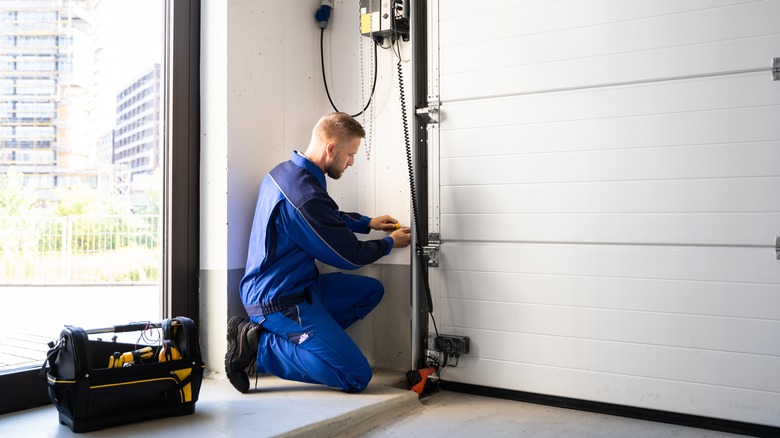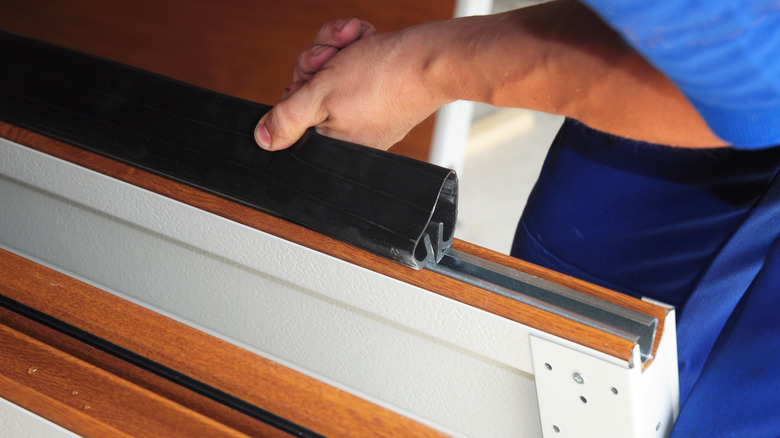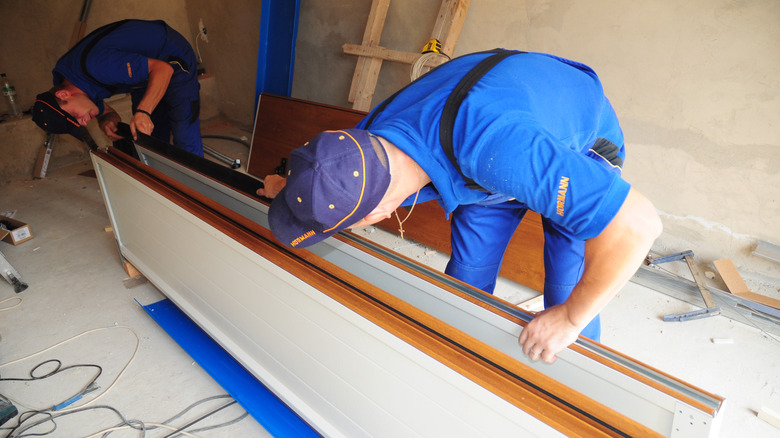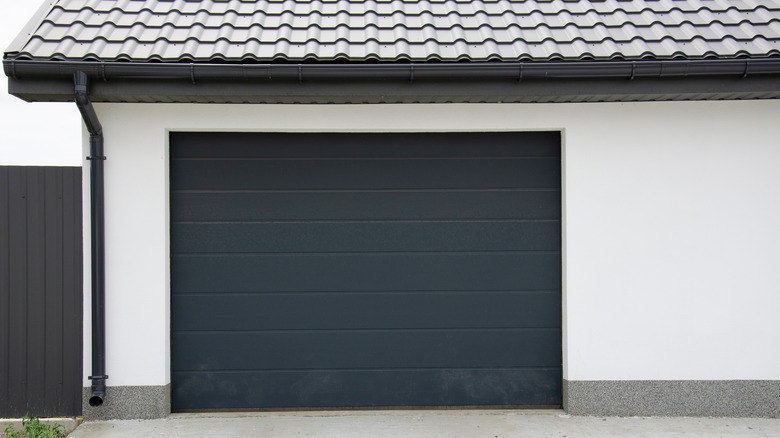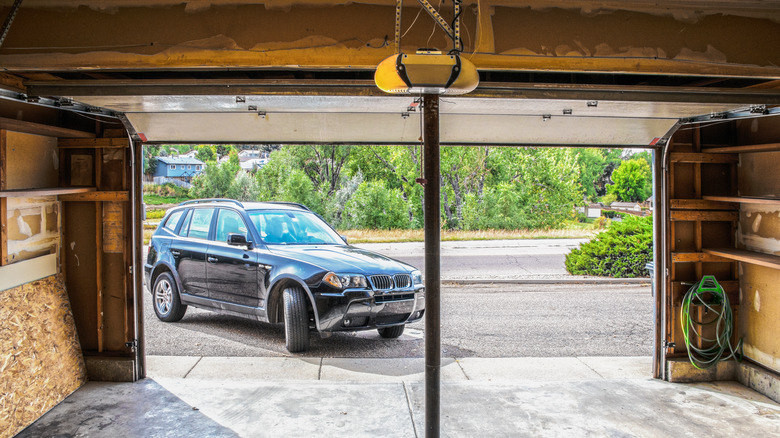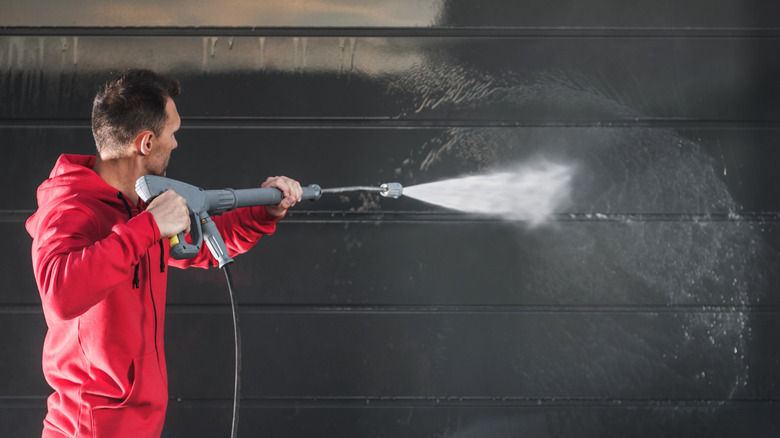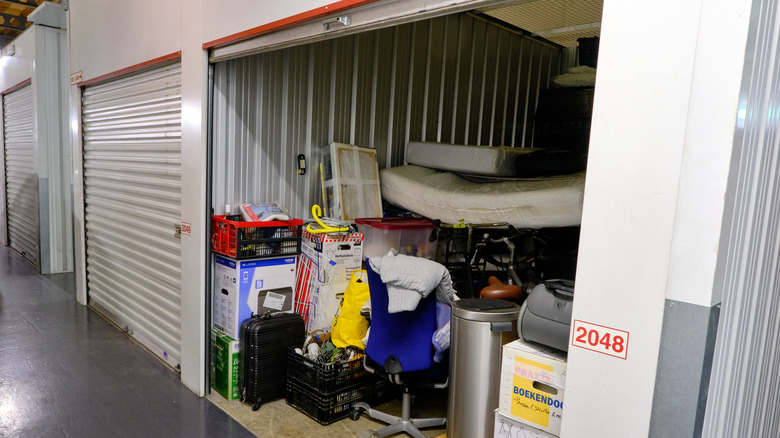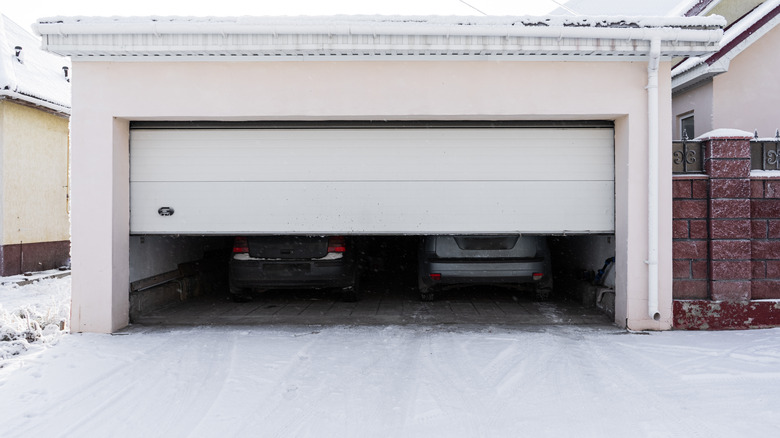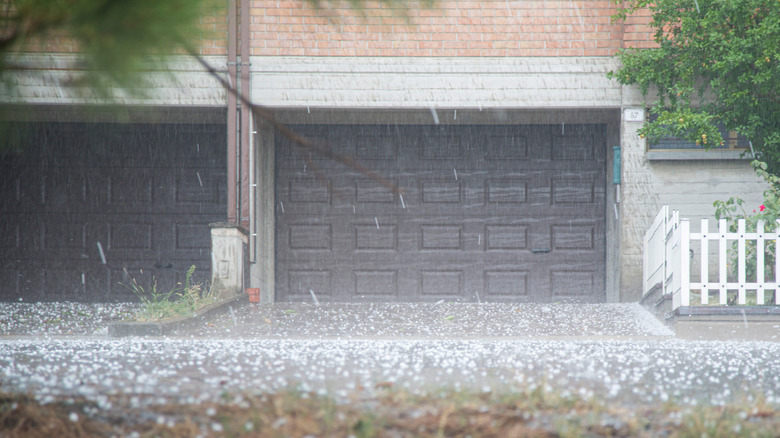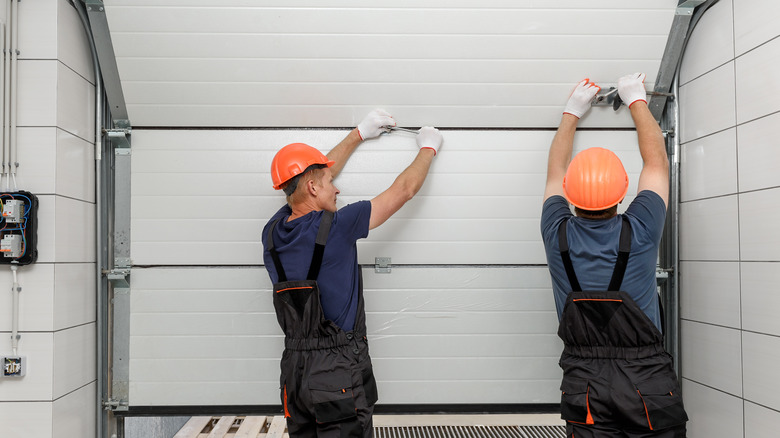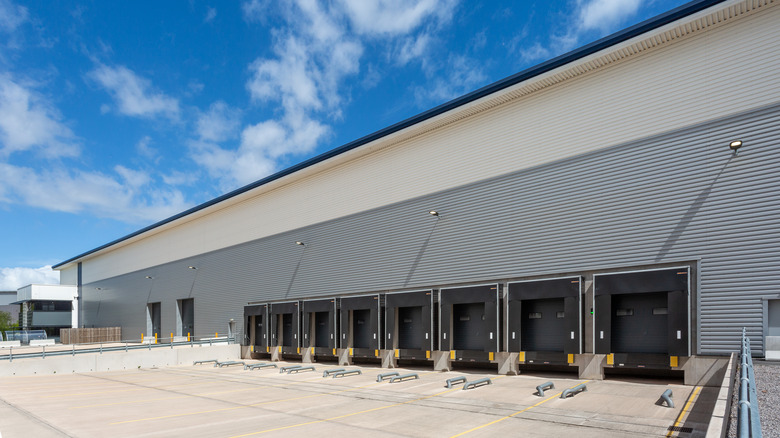What Are The Different Types Of Garage Door Seals?
Garages have many uses in addition to storing cars. They often serve as a place to keep tools or gardening equipment or can be converted into a home gym, studio, workshop, and even an extra bedroom. Because they hold valuables, garages need to be secure and weatherproof. Not only does the correct type of garage door seal act as a barrier against things like dirt and bugs, but it can also insulate your garage, explains Rx Mechanic.
The most effective kind of seal will depend on the type of garage door and where it's located; if your area has a lot of pests or small animals, try out a brush seal, if rainwater is the most significant issue, you may instead need a threshold seal. While garage door seals are generally quite durable, Rx Mechanic recommends replacing them twice a year to avoid wear and tear.
1. Bottom seal
A bottom seal is the most common type used on a garage because it keeps out both rainwater and dirt and comes in many forms for different kinds of garage doors. It is available in various sizes and can either be applied directly to the door with nails or with a retainer channel. The retainers come in several designs too, which allow you to quickly change the insert as needed rather than changing the entire seal, notes DDM Garage Doors.
2. J-type seal
The J-type bottom seal is so named due to its shape when fixed on the retainer, notes G&S Garage Doors. It creates the letter J on both sides of the threshold when the door closes and is typically used with single-channel retainers. Rubber and vinyl are the most common materials for seals like this as they seal the gap in between the door and the floor by compressing as the door closes. They can also be used to cover the sides of the door, which increases the weatherproofing.
3. T-type seal
A T-type seal is the most common and probably the simplest type of bottom seal. It makes the shape of an upside-down T and is usually used with single-channel retainers, states Rx Mechanic. You will need to ensure the size of the T matches the opening of the retainer, which means measuring the seal, advises Garage Door Zone. The retainer is usually made from steel, aluminum, or PVC, and can be fastened to both the bottom and the side of the door.
4. Bulb seal
Bulb seals have a circular shape at the bottom and a T shape at the top. The circular part is long and flat, which is why they are often referred to as tube seals. According to G&S Garage Doors, most overhead garage doors have this type of seal and they also require a retainer. They are designed to occupy the space between the floor and the bottom of the garage door and are effective at covering the gaps if the surface is uneven. However, bulb seals are only recommended for residential doors rather than commercial ones.
5. Beaded seal
Another type of bottom seal is the beaded seal. This type is actually specific to Taylor brand doors and is specially designed for their double-channel retainers. It has rounded grooves along the surface, notes Rx Mechanic, which similar to the T-type seal, is great for preventing water ingress. With beaded seals, you'll know it's time for a replacement when you start to see light coming in from the bottom of the door, explains Rx Mechanic.
6. Brush seal
Also known as a garage door sweep, these flexible seals are very durable and can be used for both the sides and the bottom of the door. This popular option is commonly used to seal doors with high levels of movement as it doesn't interfere with its functionality. Brush seals are often used in commercial properties like airport hangars or storage units. However, while the bristles effectively keep out debris, they aren't as helpful when it comes to stopping water, warns G&S Garage Doors.
7. Threshold seal
A threshold seal is a thick strip of rubber that attaches directly to the garage floor. According to JA Seals, they are also known as draught excluders or weather seals because they are commonly used to protect garages against the elements. They can be used on both residential doors and commercial ones and are particularly useful for steep or uneven driveways, notes Rx Mechanic, as they prevent water from flowing under the garage door.
8. Door stop weather-stripping
If rain and wind are the main reasons you need a seal, then weather-stripping materials like rubber or vinyl are a good choice, explains Rx Mechanic. They can also be used on the sides and top of your garage door and often come packaged in rolls that can be cut down to the right dimensions. They are easy to install and can be secured using nails or screws. You will know it's sealed well when the door presses tightly against the weatherstrip, but do be sure to change it when you notice it losing its strength.
9. Panel weatherstripping
This type of weatherstripping is specifically designed for garage doors with panels. Panel weatherstrips are usually made from heavy rubber and have a V-shaped design with adhesive on both sides. One key trick from Rx Mechanic is to fasten the adhesive material to both panels to ensure a watertight fit. Weatherstrips are usually sold in rolls, so be sure that it matches the length of the door panels.
10. Reverse angle seal
Reverse angle seals are made from hard rubber, which forms a track for the door to slide through. They are usually used on commercial buildings with tough doors made of steel. The unique thing about this seal is it doesn't need a plastic or aluminum retainer. Because the door is too heavy to be drilled into, reverse angle seals are clipped onto the mounting bracket of the door tracks, making a U-shaped seal that fits tightly on both sides of the door, notes Garage Door Doctor.
